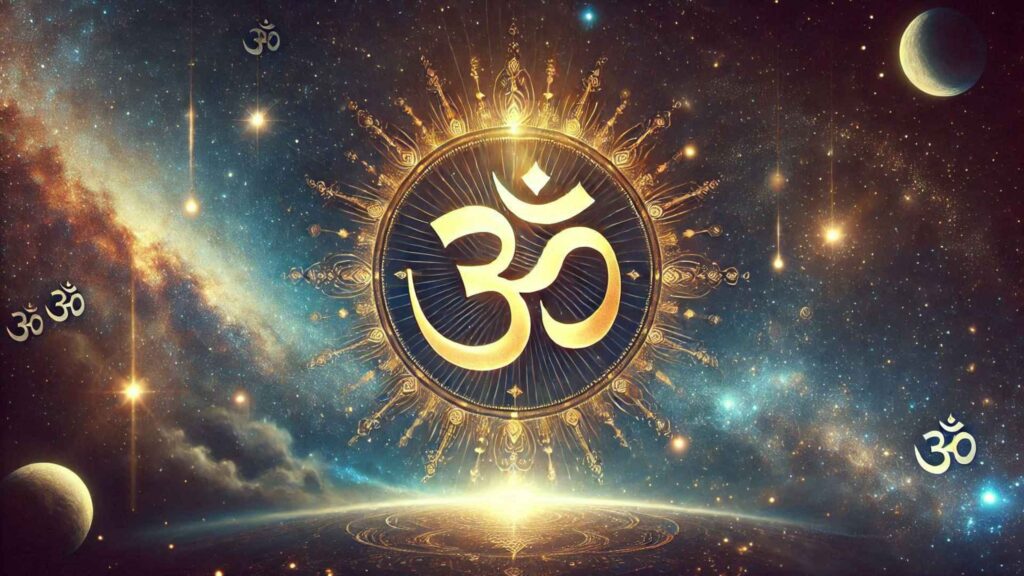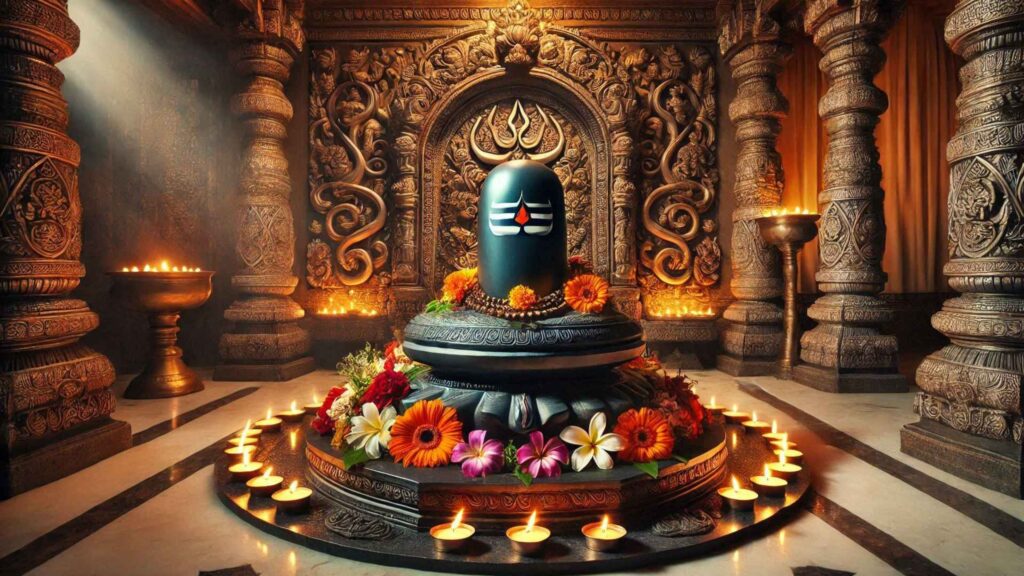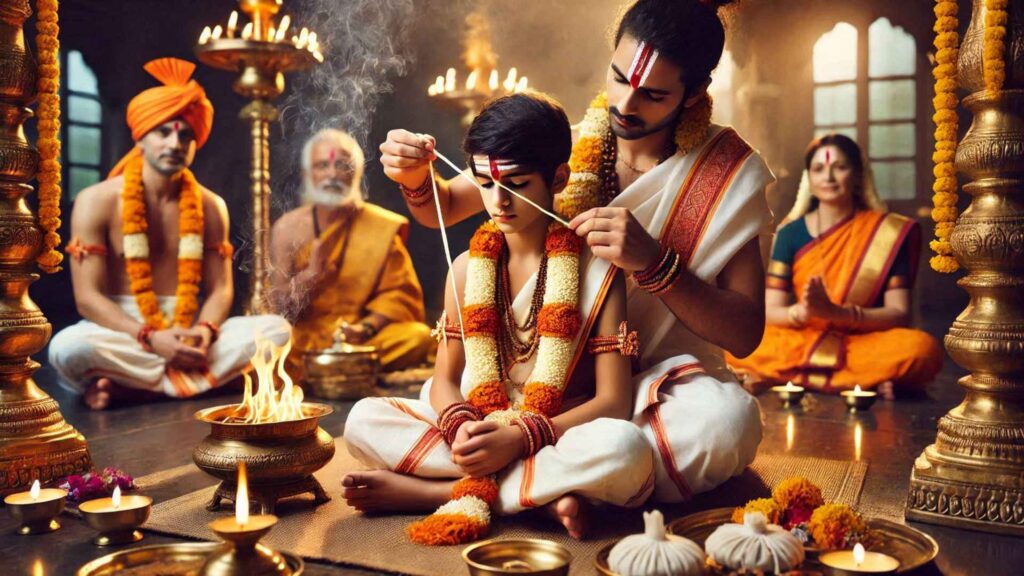Hindu Traditions and Sacred Elements: A Deep Dive into Om, Shiva Lingam, Shaligram, and More
Sacred Elements in Hindu Traditions
Hinduism, a religion rich in traditions, symbols, and philosophies, reveres certain objects and elements as sacred conduits to the divine. Sacred elements like the Om symbol, Shiva Lingam, Shaligram (sacred stone), sacred thread (Janeu), prayer beads (Mala), and the conch shell (Shankh) form the backbone of Hindu worship practices, rituals, and daily spiritual life.
Read More About sacred texts
Hook Statement
Imagine the sound of Om resonating in a quiet temple, the sight of a Shiva Lingam adorned with fresh flowers, or the feel of prayer beads guiding your meditation. These symbols are not just ancient relics; they are the heartbeat of Hindu
spirituality, connecting individuals to their faith, culture, and the divine essence.
Overview of Sacredness in Hinduism
In Hinduism, the concept of sacredness arises from the belief that divinity permeates all of existence. Objects, sounds, and symbols that represent higher truths or divine energies become sacred. These elements are more than tools of worship—they are embodiments of cosmic principles, providing a tangible way to access the intangible divine.
Modern Relevance
Despite the rapid changes of modern life, these sacred elements remain integral to Hindu traditions. They help practitioners anchor their spiritual practices, connect with the divine, and maintain a sense of continuity with ancient traditions. Understanding their significance offers insight into Hinduism’s enduring legacy and adaptability.
2. Historical Background: Origins and Evolution
Om Symbol

The Om symbol (ॐ) has its roots in the Rigveda, where it is described as the primordial sound from which the universe emerged. The Mandukya Upanishad elaborates on Om, associating it with the past, present, and future, and as the essence of Brahman (ultimate reality). Over centuries, Om became a central aspect of meditation and rituals.
Shiva Lingam

The Shiva Lingam represents Lord Shiva’s formless and infinite nature. Its origins trace back to the Indus Valley Civilization, where phallic symbols were revered. Over time, the Lingam became a focal point of Shaivite worship, symbolizing creation, preservation, and dissolution. Texts like the Shiva Purana and Skanda Purana narrate its divine significance.
Shaligram

The Shaligram, a fossilized ammonite stone found in the Gandaki River in Nepal, has been venerated for over a millennium as a representation of Lord Vishnu. Mentioned in the Padma Purana and Vishnu Purana, the Shaligram has been a cornerstone of Vaishnavite worship, often used in both temple and household rituals.
Sacred Thread (Janeu)

The Janeu, or sacred thread, originated during the Vedic period as a symbol of initiation into spiritual learning. It is closely associated with the Upanayana ceremony, a rite of passage that signifies the wearer’s commitment to dharma (duty). Historical texts like the Manusmriti emphasize its importance.
Prayer Beads (Mala)
Prayer beads have been integral to Hindu meditation for centuries. The Rudraksha mala, linked to Lord Shiva, is mentioned in the Shiva Purana, while the Tulsi mala is revered in Vaishnavism. These malas have been tools for chanting and focusing the mind.
Conch Shell
The Shankh, or conch shell, holds a prominent place in Hindu epics like the Mahabharata and Ramayana, where it served as both a war trumpet and a ritual object. Associated with Lord Vishnu, it is considered a symbol of purity, auspiciousness, and divine power.
3. Spiritual Significance: Connecting with the Divine
Om Symbol
Om represents the vibration of the universe and the essence of ultimate reality. Chanting Om aligns one’s consciousness with universal energy, fostering peace and spiritual growth. It signifies creation (Brahma), preservation (Vishnu), and destruction (Shiva).
Shiva Lingam
The Shiva Lingam symbolizes the union of Purusha (consciousness) and Prakriti (energy). It represents creation and infinity, serving as a reminder of the cosmic cycle and Shiva’s boundless nature.
Shaligram
Shaligrams are worshipped as manifestations of Lord Vishnu’s energy. They are believed to protect devotees, bring prosperity, and enhance spiritual awareness. Each Shaligram carries unique markings that symbolize different avatars of Vishnu.
Sacred Thread (Janeu)
The Janeu signifies spiritual discipline, purity, and the wearer’s responsibilities toward society and the divine. It connects the individual to the threefold path of knowledge, action, and devotion.
Prayer Beads (Mala)
Prayer beads help practitioners focus during chanting and meditation. The Rudraksha mala is said to enhance spiritual vibrations and calm the mind, while the Tulsi mala fosters devotion to Vishnu.
Conch Shell
The Shankh’s resonant sound purifies the environment and awakens divine energies. It is blown during rituals to invoke auspiciousness and symbolizes the cosmic Om.
4. Practical Application: Sacred Elements in Daily Worship
Om Symbol
- Meditation: Om is chanted to focus the mind and connect with universal energy.
- Rituals: Om is invoked at the beginning and end of prayers to symbolize unity and completeness.
Shiva Lingam
- Abhishekam: Ritual bathing of the Lingam with water, milk, and honey purifies and energizes the space.
- Home Worship: Miniature Lingams are used for personal meditation and prayers.
Shaligram
- Daily Worship: Shaligrams are worshipped with offerings of Tulsi leaves and sandalwood paste.
- Festivals: Central to rituals during Vishnu-related festivals like Janmashtami.
Sacred Thread (Janeu)
- Ceremonial Use: Worn during Upanayana, marriage, and other key rites.
- Daily Practice: A constant reminder of spiritual duties and discipline.
Prayer Beads (Mala)
- Japa Meditation: Used for repetitive chanting of mantras like the Gayatri Mantra or Hare Krishna.
- Modern Adaptations: Popular as spiritual accessories for mindfulness practices.
Conch Shell
- Temple Rituals: Blown during pujas to signify the presence of the divine.
- Festive Use: Integral to rituals during festivals like Navaratri and Diwali.
5. Cultural Impact: The Legacy of Sacred Elements
Om Symbol
Om has transcended Hinduism to become a global symbol of spirituality, inspiring art, music, and wellness practices.
Shiva Lingam
The Lingam influences temple architecture, festivals like Mahashivaratri, and devotional music, reflecting its deep cultural integration.
Shaligram
Shaligrams are family heirlooms in Vaishnavite households and hold cultural importance in Nepalese and Indian traditions.
Sacred Thread (Janeu)
The Janeu ceremony remains a cultural milestone, reflecting the intersection of tradition and spirituality.
Prayer Beads (Mala)
Malas have gained global popularity in meditation and mindfulness, connecting ancient practices to modern lifestyles.
Conch Shell
The Shankh is a motif in classical Indian art and dance, symbolizing victory and divine presence.
6. Conservation and Preservation
Challenges
- Overharvesting of Rudraksha trees and Tulsi plants.
- Environmental degradation affecting Shaligram sources.
Preservation Efforts
- Community awareness campaigns.
- Sustainable farming practices for Rudraksha and Tulsi.
- Conservation efforts for the Gandaki River.
Future Outlook
Sustainable sourcing and increased awareness can ensure the continued reverence and availability of these sacred elements.
7. Expert Insights
- Religious Scholars: “These elements are not just objects but manifestations of divine principles that guide spiritual life.”
- Scientific Research: Studies highlight the therapeutic benefits of Om chanting and Rudraksha.
- Modern Interpretations: Experts emphasize the adaptability of sacred elements in contemporary practices, blending tradition with innovation.
8. Conclusion
The sacred elements of Hindu traditions—Om, Shiva Lingam, Shaligram, Janeu, prayer beads, and the conch shell—are timeless symbols of devotion and spirituality. They bridge the gap between the material and the divine, offering a means to connect with the cosmic and maintain spiritual discipline.
Which of these elements resonates with your spiritual journey? Share your thoughts and explore more about Hindu traditions on Hinduvism.com.


